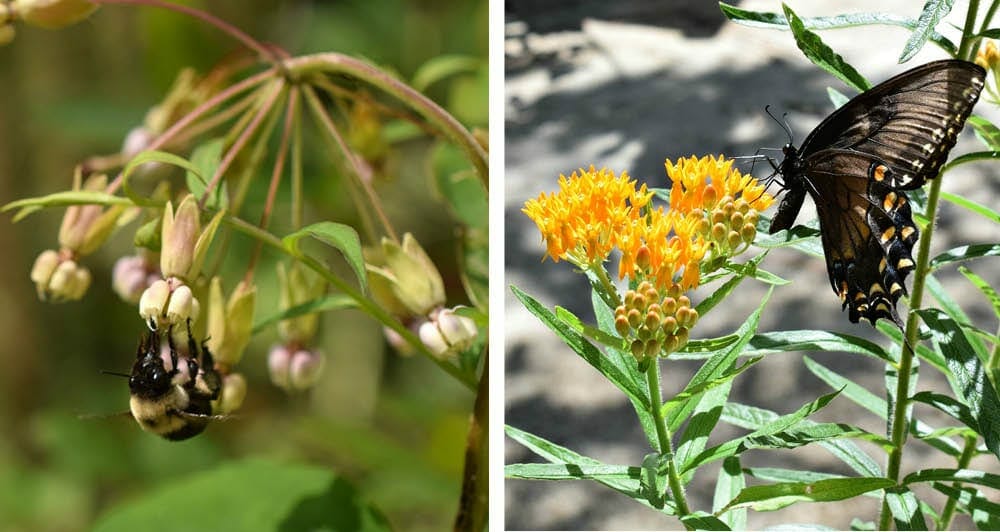Although monarch butterflies and their dependence on milkweek foliage get most of the attention, other pollinators like bees and tiger swallowtails also enjoy milkweed nectar.
If you like to garden for butterflies, you have probably been persuaded that some type of milkweed (Asclepias spp.) should be in your garden, so that monarch butterflies can lay eggs on it to grow the next generation. I, too, think that you should have milkweed in your garden, but — in this time of appreciating all pollinators and the role they play — you should know that milkweed blooms support many different kinds of pollinators, from bees to other butterflies. We recently shared a post on Facebook showing the many different butterflies enjoying the blooms of sandhill milkweed (Asclepias humistrata). You can view the post even if you don’t have Facebook by clicking on the post link, then clicking on the picture you see and use the arrow key to flip through the pictures.
Georgia is home to at least 23 species of milkweed throughout the state, from high in the North Georgia mountains to deep into the Coastal Plain. We can appreciate many of these species as we wander and hike through natural areas. I love to find the mountain species like the petite fourleaf milkweed (Asclepias quadrifolia) and the tall poke milkweed (A. exaltata) as well as the Coastal Plain species like the unique-patterned sandhills milkweed (A. humistrata) and the vibrantly-colored few-flower milkweed (A. lanceolata).
Two of the many milkweeds suitable for your garden include swamp milkweed (Asclepias incarnata var. pulchra, left) and white (also called red-wing) milkweed (A. variegata, right).
When it comes to buying milkweed for your garden, of course we are limited to what nurseries are willing to propagate, so you’re probably going to see only certain species. Luckily, one of the most commonly sold ones is also one of the most appropriate: the orange butterflyweed (A. tuberosa). Another commonly sold one is swamp milkweed (A. incarnata), although it is mostly native to north Georgia. An excellent resource for learning about Georgia milkweeds is a brochure that was created with the knowledge and efforts of the best milkweed experts in Georgia. You can find a link to a downloadable copy of the brochure at the State Botanical Garden web site and also in my April blog: Milkweeds in Georgia.
Since I live in North Georgia, one of my favorite milkweeds is poke milkweed (A. exaltata); it is one of the first species to emerge and have foliage available to monarch butterflies that come through in April. Other people have good luck with swamp milkweed being early. Orange butterflyweed is one of the last species to come back in the spring. Part-shade gardens can benefit from using white milkweed (A. variegata), also called red-ring milkweed.
Monarch butterflies lay eggs in Georgia in spring (April/May) on their northward journey and late summer (August/September) on their southward migration. I recently read an article here that suggests that gardeners rejuvenate their milkweed by cutting it back in late June or early July to get fresh foliage for them. I’m going to try that on a few of my more bedraggled plants this summer; be sure to keep them well hydrated if you do it, and always keep them pesticide free. Every garden makes a difference in our efforts to support native insects and butterflies.


